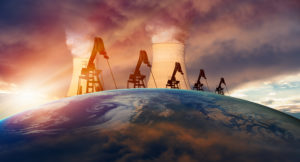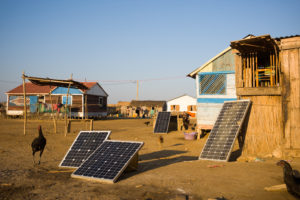ENERGY STABILITY
By now, in the year 2022, most people have been regularly exposed to the word “sustainability.”
As a word, sustainability is often referred to as it relates to the environment. It centers on the axiom that humankind ought to take steps to ensure that our lifestyles and consumption habits are able to continue on into the future without inflicting steep damage to the world around us.
Raveled up in the notion of sustainability is the very big and very precedent case of energy stability. One of the most remarkable and distinguishing features of our civilization (in comparison to those throughout history) is our immense daily demand for energy.

How Much Energy Does the Globe Use?
According to the organization The World Counts, our annual global energy consumption rests somewhere in the neighborhood of 580 million terajoules. This is estimated to be the equivalent of about 13,865 million tons of oil-equivalent energy… or if you ran your washing machine from now until the end of the universe!
Put simply, we use an unfathomable amount of energy across the globe each year. As we have become more globally connected as a society, it’s become glaringly obvious that there is a great opportunity to improve our overall energy stability.
The Supply Chain Effect on Our Energy Stability
Renewable energy resources are classified as “renewables.” And renewable energy accounted for more than half of 2021’s new energy generation. Energy sources such as sunlight, hydroelectric, biomass, geothermal, or wind fit into the category of “renewable.”
But the combination of this newfound demand coupled with ambitious international renewable energy targets has exposed holes within the broad energy infrastructure supply chain.
It is not often that we have to perplex our minds by thinking about supply chain troubles. But the last two years have shown how vulnerable this infrastructure can be to disruptions. The end effect of not receiving a package on your porch often starts thousands of miles away.
Although global sentiment is attuned toward renewable energy, the recent shortages of electronics, manufactured components, and international political stress have put a damper on the growth of renewable energy stability.
Another obvious example of this is how the unfolding events between Russia and Ukraine showed an immediate effect on the price of gas — both due to the supply of oil as well as how various countries have chosen to respond politically.

Shoring up Our Energetic Weak Spots in the Supply Chain
Making a full transition to renewable energy resources is a goal that is worth striving for, but it must consider a realistic pathway to get there.
Renewable energy resources face several key challenges as they move along their upward trajectory:
- Ability to ensure sufficient flexibility within power system supply and operations
- Addressing the exponentially increased complexity of the power system from an operational level
- Integrating and repurposing existing power sources and devices to a renewable standard
Diversification of energy resources (both materials and infrastructure) within the supply chain only stands to benefit the globe as we work toward a transition toward a more stable and sustainable energy ecosystem.
Oil and natural gas are abundant within the African continent, making the countries of Africa valuable partners in helping to address shortcomings within our current annual need for our 580 million terajoules.
And as we think about renewable energy, solar panel production needs to see expert adoption within many more parts of the world to satisfy demand and meet the optimistic trajectories for renewable solar energy.
Playing to Our Strengths and Aiming for the Future
I believe in optimizing our existing energy infrastructure as we thoughtfully look ahead at the future of renewable energy.
Meeting global energy demands will only continue to prove more challenging. If we seek to improve our existing supply network of energy as we architect the ecosystem of the future, there is no doubt in my mind that we can be successful, stable, and sustainable.
